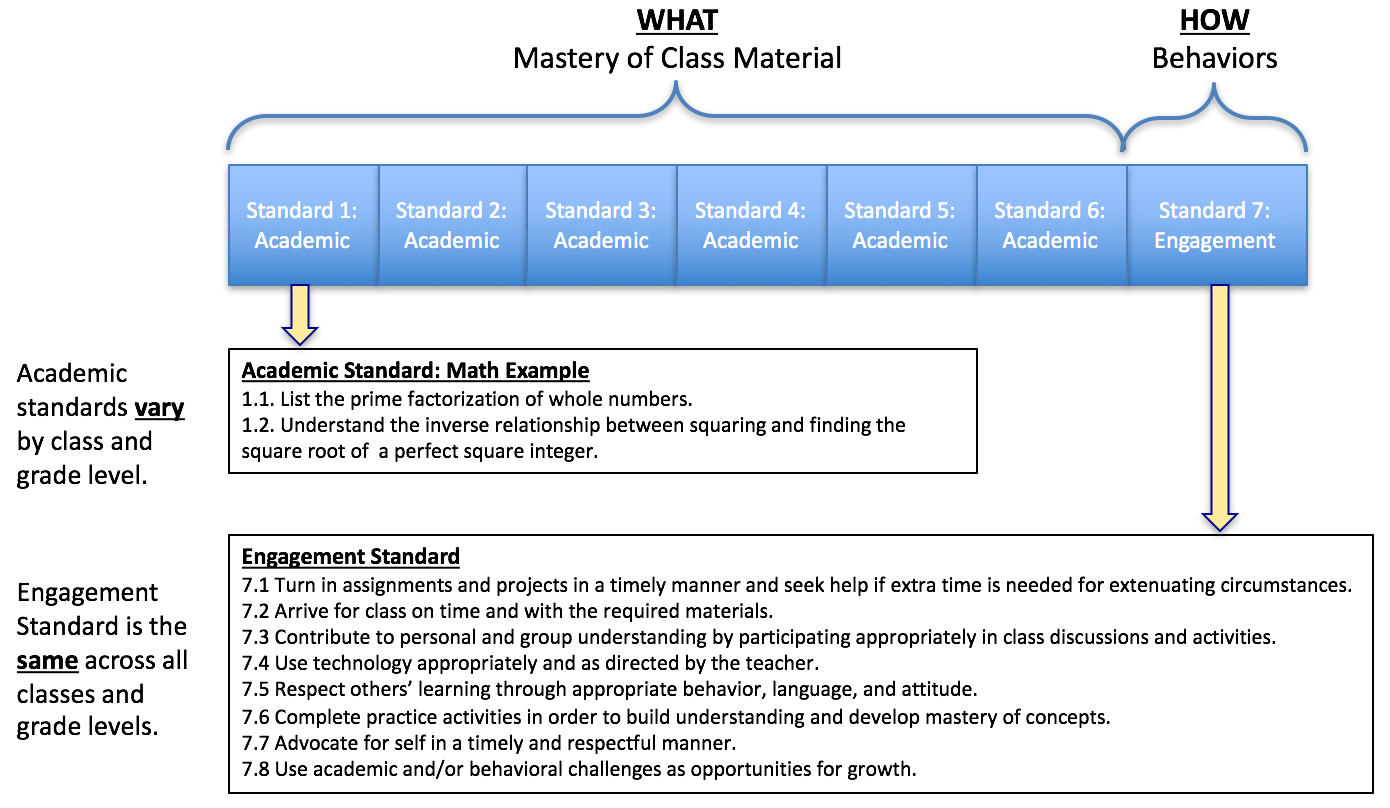Standards-Based Grading
Midwest Academy employs Standards-Based Grading, which is based on student mastery of the course material. This reflects the Midwest Academy mission to make student learning, and in turn grading, more meaningful. In Standards-Based Grading, students receive a numerical score of 0-4 for each standard, which represents an objective, that an assignment or assessment covers. Most assignments and assessments include multiple standards. The teacher provides the measurement standards students need to achieve for each score in a rubric prior to each assignment.
What is the Rationale Behind Standards-Based Grading?
- Makes grades more meaningful
- Helps teachers adjust instruction (e.g., does whole class need a concept re-taught?)
- Motivates students to work toward progress instead of immediate perfection
- Eliminates issues with percentage grades (0-60 is a large margin for failing)
- Accurately paints a clear picture of what a student has learned
Standards-Based Grading and the Engagement Grade
The Engagement Grade is included as a weekly engagement score and sometimes also as a standard within an assignment, such as working with a partner. The purpose of the Engagement Grade is to hold students accountable for their personal engagement in class and to identify weaknesses so that strategies can be put into place to help each student develop these important life skills. While the tracking and incorporating of this grade is very important for student growth and development, the Engagement Grade only constitutes a small portion of each student’s overall grade for each class. See the following graphic for an example.
The following table helps describe the score in terms of academic performance.
| Score | Defined Academic Performance |
| 4.0 | The student demonstrates an in-depth understanding of the material by completing advanced applications of the material for the class. |
| 3.0 | The student has mastered the complex, targeted knowledge and skills for the class. |
| 2.0 | The student understands the foundational material that supports the targeted learning, but is still working to master the complex material for the class. |
| 1.0 | The student is able to demonstrate an understanding of the foundational material for the class with help from the teacher, but still struggles when working independently. |
| 0.0 | Even with assistance from the teacher, the student shows no understanding of the material. |
* The intermediate scores of 0.5, 1.5, 2.5, and 3.5 are used to show that a student has shown partial mastery of the next level of learning.
In middle school, each numerical score correlates to a mark labeled Beginning, Developing, or Proficient. It is the goal for all students to build greater mastery or proficiency throughout the year.
| Score | Defined Academic Performance |
| 4.0 – 3.0 | Proficient |
| 2.9 – 1.1 | Developing |
| 1.0 – 0.0 | Beginning |
In high school, each numerical score is converted to a traditional letter grades (A-F), as these letter grades are required for college admittance. It is the goal for all students to build greater mastery or proficiency throughout the year.
| Letter Grade: Score Range | Letter Grade: Score Range | Letter Grade: Score Range |
| A: 3.9 – 4.00 | B-: 2.7 – 2.9 | D+: 1.3 – 1.6 |
| A-: 3.7 – 3.8 | C+: 2.3 – 2.6 | D: 1.0 – 1.2 |
| B+: 3.3 – 3.6 | C: 2.0 – 2.2 | D-: 0.7 – 0.9 |
| B: 3.0 – 3.2 | C-: 1.7 – 1.9 | F: 0.0 – 0.6 |
To learn more about Standards-Based Grading, here are some additional resources of interest.
Midwest Academy – Standards-Based Grading Presentation
Seven Reasons for Standards-Based Grading, Patricia Scriffiny, Educational Leadership, October 2008
Grading: The Issue is Not How but Why, Alfie Kohn, Educational Leadership, October 1994



